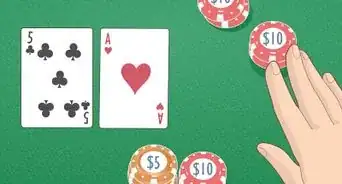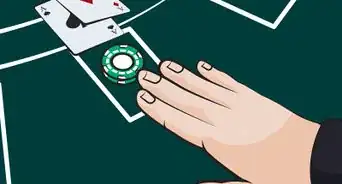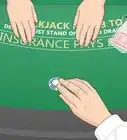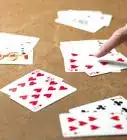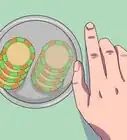wikiHow is a “wiki,” similar to Wikipedia, which means that many of our articles are co-written by multiple authors. To create this article, 28 people, some anonymous, worked to edit and improve it over time.
wikiHow marks an article as reader-approved once it receives enough positive feedback. In this case, several readers have written to tell us that this article was helpful to them, earning it our reader-approved status.
This article has been viewed 659,801 times.
Learn more...
In most versions of Blackjack, when you are dealt a pair (two of the same card), you have the option to split them into two new hands. You are dealt two more cards (one for each new hand) and your bet is doubled. You play each hand normally — you get two chances to beat the dealer (or lose). Knowing when to split pairs in blackjack is vital for high-level play. Best of all, since there are only ten card values, it's not hard to memorize what to do in every single situation.
Steps
Blackjack Help
When You Should Always Split
-
1Always split aces. There are a few situations in Blackjack when it always makes sense to split, no matter what card the dealer is showing. For example, you should always split when you get a pair of aces. Splitting gives you a much better chance to get a strong hand. See below:
- If you play your two aces as one hand, you'll start with a value of 12 (one is played as an 11 and the other as a one). Only a nine will give you 21. A 10 or face card will force you to play the second ace with a value of one, bringing you back to 12.
- On the other hand, if you split, you have four ways to get a 21 in either hand (being dealt a 10, J, Q, or K).
-
2Always split eights. Besides aces, the other pair that almost every Blackjack expert will tell you to split on is eights. It's difficult to get a good hand when you play your eights as one hand. Your chances aren't fantastic when you play them separately, but you do stand a better chance mathematically. See below:
- Playing your two eights as one hand starts you at 16 (a very weak hand). Hitting at this point is a risky proposition. Anything above a 5 will cause you to bust, so you have about a 60% chance of losing the hand from the get-go.
- On the other hand, if you split, it's impossible to bust out on your first hit, so you at least have a chance of getting a more favorable hand.
Advertisement -
3Always re-split aces or eights if you are dealt a second pair. When you split, the dealer gives you two cards — one for each of the new hands. If this gives you a second pair of aces or eights, treat it as its own hand and split again.
- Note that this requires you to triple your original bet (splitting the first time requires you to double it).
- House rules may vary here. Most Blackjack games will allow you to split a maximum of three times (to play a total of four hands).
When You Should Never Split
-
1Never split tens. This is a common rookie mistake in Blackjack. Splitting 10s essentially sacrifices a great hand for a very slim chance at an even better one. See below:
- If you play a pair of 10s, your hand has a value of 20, which is quite good. If you split 10s, you need to get an ace to improve your stance — anything else will give you a hand that has an equal or lesser value. Statistically speaking, splitting tens is most likely to give you two hands worse than the first one.
- Some card-counting experts suggest splitting 10s in very specific situations. For example: if you're counting cards and know that there are lots of 10s left in the shoe, it can make sense to split 10s against a dealer showing 5 or 6 (which suggest a weak hand). This way, you stand a reasonable chance of getting at least one 20, while the dealer will have to get lucky to match or beat you.[1]
-
2Never split fours. Splitting a pair of fours just gives you two weak hands, so it makes no sense. Remember that splitting requires you to double your original wager — this means splitting fours is usually a money-losing proposition.
- When you hit on a pair of fours, it's impossible to bust out — the highest you can go is 19 if you get an ace, which is a pretty decent hand. If you split your fours, you're likely to get left with a less-valuable hand (if you get a two or three) or a hand that is possible to bust out on if you hit (if you get an eight or higher). You need to get a five, six, or seven to be better off than you were originally.
-
3Never split fives. When you see a pair of 5s, forget that they're a pair and treat them like a single 10. Double down on a 10 against anything but a dealer's nine, 10 or ace. For these three possibilities, just hit.
- Splitting a pair of fives is like splitting fours, only worse — you give up a strong starting hand for a very slim chance at getting something better. With a pair of fives, you can't bust out and you have a chance of getting 21 on the first hit. If you split, you'll be left with a weaker hand (if you get a two, three, or four) and/or a hand that it's possible to bust out on if you hit (if you get a six or above). There's really no way to come out ahead by splitting on fives.
When Splitting is Sometimes a Good Idea
-
1Split twos, threes, or sevens if the dealer shows a seven or lower. The examples in the sections above are hard and fast rules that should rarely (if ever) be broken. For other pairs, the best course of action usually depends on the card the dealer is showing. For example, pairs of twos, threes, and sevens should be split when the dealer shows a relatively low card. If the dealer has an eight or better showing, just take a hit.
- Some resources recommend splitting twos and threes (but not sevens) when the dealer shows an eight.
-
2Split sixes when the dealer shows a two through six. If the dealer has a seven or better, just take a hit. Mathematically, you're more likely to beat weak dealer hands if you split your sixes. If the dealer is likely to have a stronger hand, your best bet is to hit and improve your hand — you'll only bust out if you get a 10 or face card.
-
3Split nines against two through six, eight, and nine. If the dealer has a seven, ten, or ace showing, don't hit — instead, stand. Hitting on an 18 is borderline-suicidal. Anything but a two or three will make you bust out.
Community Q&A
-
QuestionAre there statistics to back not splitting pairs of 10s vs. the dealer showing a 6?
 Community AnswerYes, a pair of tens is already beating the 6 and the dealer has a 40% chance of winning.
Community AnswerYes, a pair of tens is already beating the 6 and the dealer has a 40% chance of winning. -
QuestionDoes this information apply on more decks of cards than two?
 Community AnswerWith each new deck, the chance of a getting each individual card stays the same except for doubles of cards already played. This guide mostly assumes even odds on the next card, so the number of decks should not matter.
Community AnswerWith each new deck, the chance of a getting each individual card stays the same except for doubles of cards already played. This guide mostly assumes even odds on the next card, so the number of decks should not matter. -
QuestionShould I split pairs of face cards?Face cards are worth 10. Look at Method Number 2 No.1 for information about tens.
References
About This Article
In Blackjack, you have the option to split any matched pair of cards into two new hands and double your bet. However, this isn’t always the best option. To know whether or not to split your pairs, pay attention to which cards are in your hand as well as the dealer’s hand. Some types of pairs should be split no matter what the dealer is holding. For instance, it’s always a good idea to split a pair of aces. With a split pair of aces, you can get a 21 with either hand if you get a ten or any face card. You’ll also get a much better chance at a good hand if you split a pair of eights. If you happen to get a second pair of aces or eights, take the opportunity to triple your bet and split again. On the other hand, there are some pairs where the dealer’s hand should factor into your decision to split. For example, if you have a pair of twos, threes, or sevens, it’s a good idea to split if the dealer shows a seven or lower. However, if the dealer shows an eight or higher, don’t bother splitting. Similarly, it’s best to split sixes if the dealer shows a two through six, but not if they have a seven or higher. Split nines if the dealer has a two through six, an eight, or a nine, but not if they have a seven, a ten, or an ace. Finally, there are some pairs you should never split. A pair of tens on its own is a good hand and you have a much lower chance of making a better one if you split the pair. Likewise, a pair of fives is a strong starting hand that you’ll only weaken by splitting it. Stay away from splitting fours, too—you’ll likely just end up with two weak hands.





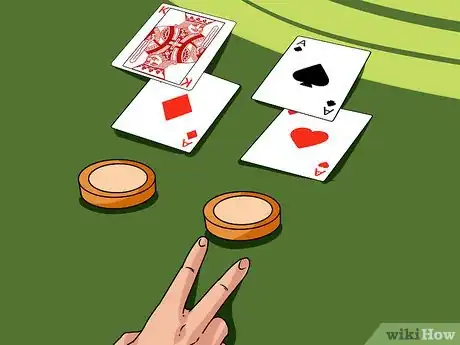


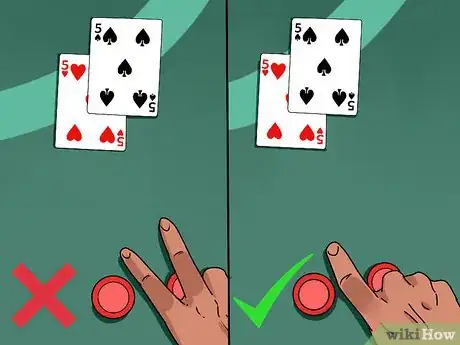




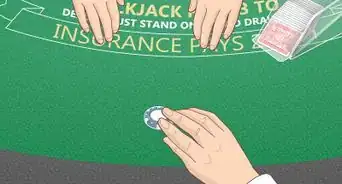
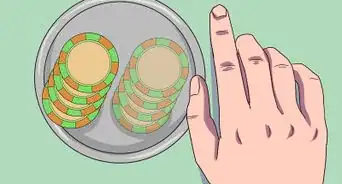


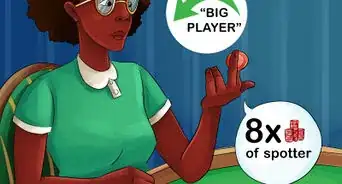


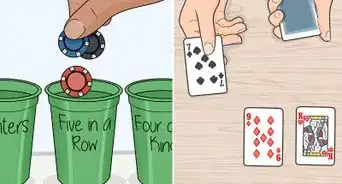
-Step-25.webp)
